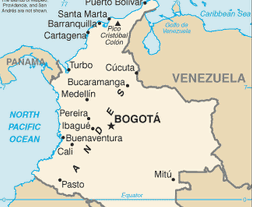Bogota, Colombia – 2011 has had no shortage of refugee crises: political conflict in the Ivory Coast sent hundreds of thousands fleeing, repression in Syria continues to push hundreds into neighboring Turkey, a drought in the Horn of Africa is sending record numbers of Somali refugees into Kenya and Ethiopia, and Libyans have been consistently pouring into Tunisia for months now.
Incredibly, the cash-strapped international community has mobilized to accommodate all these new migrations. But in a year when European countries, the United States, and other traditional donors are looking for ways to balance their budgets, how exactly is the United Nations paying for it? In part by cutting resources in protracted crisis zones.
One of those places is here in Colombia, where more than 3.6 million of the country’s 45 million people are still displaced from the country’s decades-long conflict. Many of these people haven’t gone home in years or even decades. Still others have been displaced more than once. And it’s not over. In the first three months of 2011, more than 8,000 people were displaced — more than all of last year.
The needs are as great as ever, but the means are not. The U.N. High Commission for Refugees office here is facing a $2 million shortfall and it’s closing offices — one in the country’s North Atlantic coast and another in the central department of Santander.
These cuts are happening at a critical moment in Colombia’s crisis. Over the last decade, the government here has worked tirelessly to restore security to the country’s main urban areas and roads to great effect. But such visible successes have had their drawbacks — namely, pushing the fighting into rural areas that are far less accessible to government and international officials. A disproportionate number of indigenous people, for example, are now being displaced as armed groups confiscate their land.
All the meanwhile, however, UNHCR is having to cut back on field missions to these same, road-inaccessible jungle areas. In the country’s south, displacement is likely ongoing but there is simply no way to know how many people are affected, spokesperson Francesca Fontanini in Bogota explains. Nor are there local groups who could help monitor displacement. “Maybe the problems are even worse, but we don’t have data.”
Local authorities can and are going some way to fill the gap. When floods displaced 2 million people here late last year, the Presidential Agency for Social Action and International Cooperation mobilized $42 million in aid, for example. But it was a reminder of how protracted and long-lasting this crisis is that some 60 percent of the people who left their homes had already been displaced at least once before by conflict.
